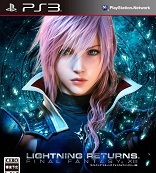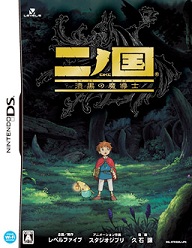Dragon Quest Monsters: Joker
Nintendo DS
Reviewed: 11/14/2007
 Heading up the slew of Dragon Quest games to be released in the short future, Dragon Quest Monsters: Joker is a monster-training spinoff based on the series’ popular creatures. Yes, of course it has slimes.
Heading up the slew of Dragon Quest games to be released in the short future, Dragon Quest Monsters: Joker is a monster-training spinoff based on the series’ popular creatures. Yes, of course it has slimes.
While Dragon Quest Monsters: Joker doesn’t have a ground-shaking story, it does boast some interesting facets to an otherwise average plot. It begins with the main character being chastised by his father, the head of a secret monster research organization named CELL, for trying to run off to compete in Donus Island’s annual Monster Scout tournament. Said father quickly relents and sends the main character off on a mission to participate in and infiltrate the event. The player will quickly find themselves undertaking three simultaneous quests: the main character’s personal goal of completing the tournament, following the orders given by CELL, and working with a strange monster called the Incarnus to complete its mission to stop a great catastrophe. The late game, instead of entirely wailing about catastrophe and contest statistics, presents some interesting and unexpected characterization, in both spotlight characters and NPCs, that delves into how various people feel about the world around them. On the downside, attempts to cultivate an artificial rival, a girl named Solitaire bent on winning the contest and adding the Incarnus to her team, fall short and serve only to annoy.
 |
| Dracky! |
Dragon Quest Monsters: Joker sends players on a mission to capture monsters for themselves, and use them to create even more powerful monsters. This is accomplished by Scouting and Synthesis. When in battle, one may select the “Scout” option to have their party “attack” one enemy without dealing damage, in order to intimidate them. Based on the strength of these hypothetical attacks, a percentage bar will increase, and after the barrage, that monster will have x% of joining the team. If the scouting succeeds, all other monsters flee and the player names his new creature, but if it fails, the enemy team attacks, and sometimes gets a strength boost. This provides an interesting balance between luck and strategy, as status effects and buffs will affect scouting strength and hit percentage. Powerful monsters are harder to scout and pose a larger threat if the scouting fails, but can be extremely useful in synthesis, which means many probabilities must be weighed. To synthesize monsters, one must visit a Scoutpost and select from the bank of monsters level 10 or above, picking a positive and a negative monster to combine. This will bring up a list of one to three new monsters that may be created, along with its skill sets. Upon synthesis, three skill sets may be selected from the old monsters’ rosters, retaining half of the total skil points invested, or from the new monster’s potential roster. This allows for virtually endless combinations of monsters and skill builds, and dresses up the typical Dragon Quest-style turn-based battle system, making the game overall a pleasure to play.
There are a few downsides to these gameplay elements, but the largest one is the awful interface. Menus are slow, clunky and inefficient. Often, the main menu will close when one cancels from an option, requiring it to be opened again to perform another action only to have it close again. Cancelling after picking two monsters in the synthesis menu will bring the player right back to the beginning of the menu instead of undoing the last selection, making comparing results very annoying. It is impossible to see how many skill points are allocated to a given monster’s skills unless there are actually skill points to spend, and skill points can only be spent from the menu when the monster is in the player’s three-man party, forcing a lot of unnecessary and slow party-swapping. Never mind that the numerous monsters in storage or even reserve slots gain skill points that must be spent, at risk of being accidentally wasted when synthesizing. These and other interface frustrations do lessen the enjoyment gained from the finer points of the game’s systems, and reduce the desire to spend extensive time combining monsters or performing what should be relatively simple tasks.
One disappointment is that the 200+ monsters are given a rank ranging from F to X in strength. The gaps between monster ranks are very large, and forces the player to always abandon their weaker monsters for new stronger ones, or spend ten hours or more grinding the old ones to make up the lost strength. This downside is disappointing, because it means that no matter how beloved the Dracky, Dingaling or Mechamyna, they will never be viable party choices as the game grows longer, no matter what strategy was used to train them. Players seeking the “ultimate” party for multiplayer or the post-game will basically be confined to S and X rank monsters.
 |
| Infant Island is not a place for grinding. |
The graphics in Dragon Quest Monsters: Joker look great, assuming one doesn’t look too closely. The character and monster models look great, but the landscapes are composed of various pixellated textures, especially evident when the player moves in for a closer look. What’s puzzling is that some are more heavily pixellated than others: water and sky effects often look like giant blocks and blobs, whereas floor patterns are consistently among the smoothest components of the environment. Nevertheless, the environments mesh well together, and look fine as an ensemble or when viewed from a distance. Stylistically, the character models get a bit dull after a while, as they are frequently recycled: prepare to see blond-dullard-with-a-bowl-cut and burly-man-with-horns-what-the-heck several times each location. However, the monster designs are numerous, interesting, and rarely palette-swapped. If Akira Toriyama has one not-weak spot, it is in his monster designs.
Continuing with the ups-and-downs trend, Joker‘s sound effects are both good and bad. On one hand, the noises that the monsters make in and out of battle are an excellent assortment of rattles, clanks, and whooshes. Famous Dragon Quest sound effects also make an appearance. On the other hand, some sound effects just sound bad, such as the sound effect played when switching screens via flights of stairs. Musically, the game contains a few good tunes and arrangements, and a few okay ones. What does “a few” plus “a few” make? “Some?” There just isn’t enough music here. Every island (save one) has the same music, and every dungeon (save one) has the same music.
Dragon Quest Monsters: Joker has some inherent replay value in its monster synthesizing system, as players can conceivably play the game with a different party set up each time. The game’s structure is linear, but allows for some minor detouring and order-mixing, even going so far as to provide thirteen darkonium crystals to collect the requisite ten from. It also has a few optional areas and challenges, including battle arenas and quests to procure specific monsters, and these are not just available, but required in the post-game to access the new Monster Scout Challenge. Rewards are also available for completing portions of the Monster and Skill Libraries. Added to the three multiplayers modes, these assets give Joker the potential to double or triple its 20-30 hour normal length.
Dragon Quest Monsters: Joker is an experience that constantly rides a wave of up and down. All of its aspects have good and bad counterpoints, such as the gameplay versus the interface, or the quality versus the quantity of music. Ultimately, just like in the classic story, the good triumphs over the bad, making Joker a recommendable title for those itching for another turn-based RPG on the Nintendo DS.
-Janelle Hindman
| Score Breakdown | ||
| Overall Very Good Out of 10 See our Review Criteria |
Gameplay | Very Good |
| Story | Good | |
| Graphics | Good | |
| Sound/Music | Average | |
| Replay Value | Very Good | |
| The Verdict: Very Good | ||








